Tom's Hardware Verdict
The Thermaltake Toughpower GF3 1200W is powerful and comes with a 600W 12VHPWR connector, supporting all current and upcoming GPUs.
Pros
- +
Full power at 47 degrees Celsius
- +
ATX v3.0 and PCIe 5.0 ready
- +
High overall performance
- +
Good build quality
- +
Correctly set OCP at 12V and OPP
- +
Efficient at light and super-light loads
- +
Long hold-up time
- +
Good transient response
- +
Great ripple suppression
- +
High PF with 230V
- +
Low vampire power
- +
Fully modular
- +
Compatible with the alternative sleep mode
- +
FDD fan
- +
Adequate distance between the peripheral connectors
- +
10-year warranty
Cons
- -
Increased noise under stressful conditions
- -
Load regulation is not so tight
- -
High inrush current with 230V
- -
High OCP on the minor rails
Why you can trust Tom's Hardware
The Thermaltake Toughpower GF3 1200W offers high performance and compatibility with ATX v3.0 and PCIe 5.0. The fact that it is noisy at high loads didn't prevent it from earning a place in our best PSUs list. Its main competitor is the Cooler Master MWE Gold 1250 V2, which is not ATX v3.0 ready and lacks a 12VHPWR connector.
Thermaltake recently introduced its GF3 line, starting from 750W and going all the way up to 1,650W. The lower capacity models, up to 1,200W, are made by Channel Well Technology, while the 1,350W and 1,650W units are by High Power. This review will look at the strongest CWT-made GF3 unit, which comes with a 600W 12VHPWR connector, supporting Nvidia's flagship, the RTX 4090. There is no need for an ATX v3.0 or PCIe 5.0 ready for the graphics mentioned above card. You just need a strong PSU, ideally 1,000W or more powerful.But, if you want to avoid adapters and be future-proof, a PSU like the GF3 1200 is the way to go.









The Toughpower GF3 1200W has a native 12VHPWR connector, and it is ATX v3.0 compatible, meaning that it can deliver double its power, 2,400W, for 0.1ms periods without shutting down or having any other operating issues. This is to cope with any power spikes from the GPU or any other system component. Thermaltake also equipped it with a fluid dynamic bearing fan and other top-quality parts, which should allow it to outlive the extended, ten-year warranty.


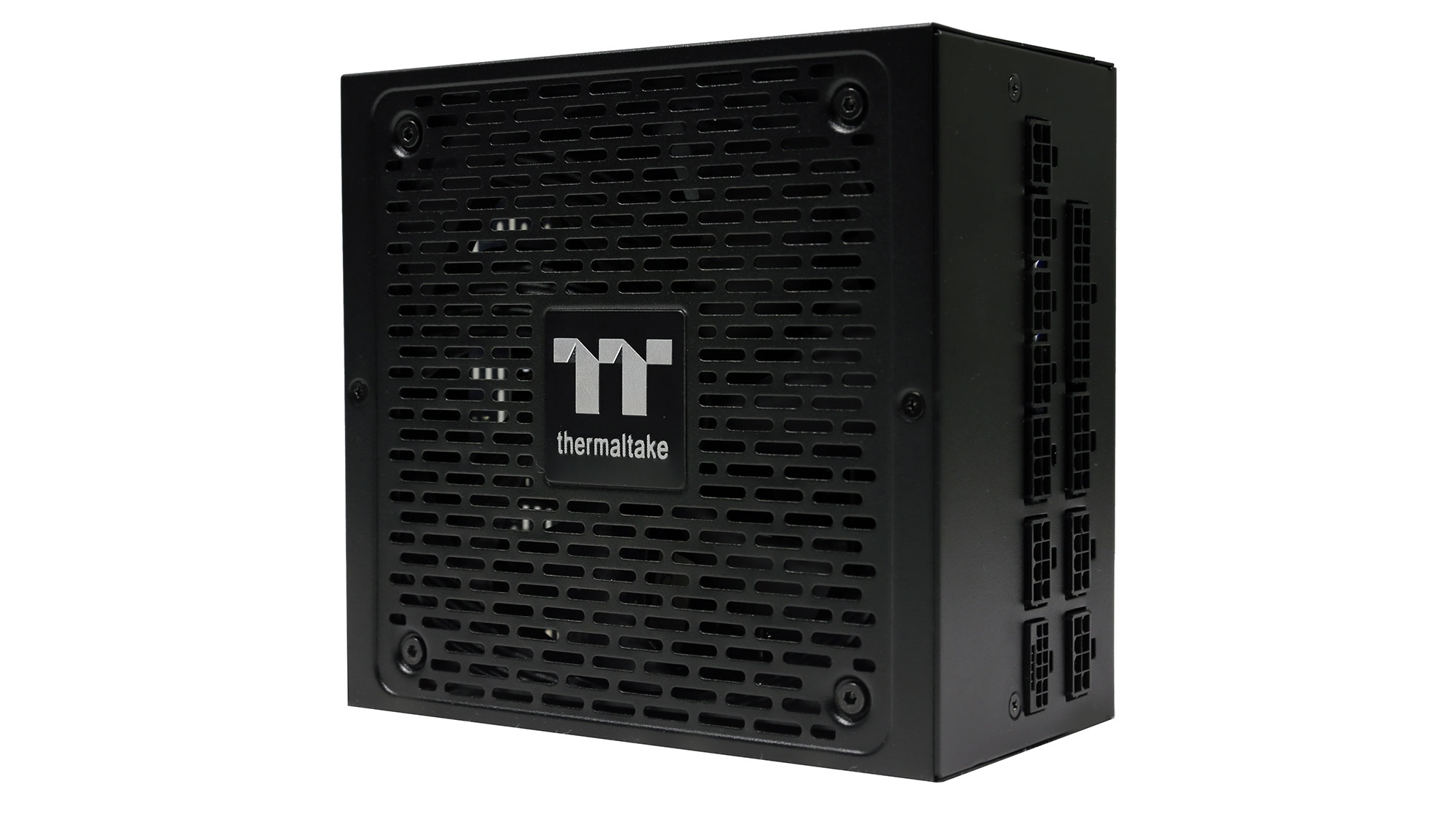
Specifications
| Manufacturer (OEM) | CWT |
| Max. DC Output | 1200W |
| Efficiency | 80 Plus Gold, Cybenetics Gold (87-89%) |
| Noise | Cybenetics Standard (40-45 dB[A]) |
| Modular | ✓ (fully) |
| Intel C6/C7 Power State Support | ✓ |
| Operating Temperature (Continuous Full Load) | 0 - 40°C |
| Over Voltage Protection | ✓ |
| Under Voltage Protection | ✓ |
| Over Power Protection | ✓ |
| Over Current (+12V) Protection | ✓ |
| Over Temperature Protection | ✓ |
| Short Circuit Protection | ✓ |
| Surge Protection | ✓ |
| Inrush Current Protection | ✓ |
| Fan Failure Protection | ✗ |
| No Load Operation | ✓ |
| Cooling | 135mm Fluid Dynamic Bearing Fan (HA13525H12SF-Z) |
| Semi-Passive Operation | ✓(selectable) |
| Dimensions (W x H x D) | 150 x 85 x 160mm |
| Weight | 1.81 kg (3.99 lb) |
| Form Factor | ATX12V v3.0, EPS 2.92 |
| Alternative Low Power Mode (ALPM) compatible | ✓ |
| Warranty | 10 Years |
Power Specifications
| Rail | Row 0 - Cell 1 | 3.3V | 5V | 12V | 5VSB | -12V |
| Max. Power | Amps | 22 | 22 | 100 | 3 | 0.3 |
| Row 2 - Cell 0 | Watts | Row 2 - Cell 2 | 120 | 1200 | 15 | 3.6 |
| Total Max. Power (W) | Row 3 - Cell 1 | Row 3 - Cell 2 | 1200 | Row 3 - Cell 4 | Row 3 - Cell 5 | Row 3 - Cell 6 |
Cables & Connectors
| Description | Cable Count | Connector Count (Total) | Gauge | In Cable Capacitors |
|---|---|---|---|---|
| ATX connector 20+4 pin (600mm) | 1 | 1 | 16AWG | No |
| 8 pin EPS12V (700mm) | 1 | 1 | 16AWG | No |
| 4+4 pin EPS12V (700mm) | 1 | 1 | 16AWG | No |
| 6+2 pin PCIe (500mm+150mm) | 2 | 4 | 16-18AWG | No |
| 12+4 pin PCIe (600mm) (600W) | 1 | 1 | 16-24AWG | No |
| SATA (500mm+150mm+150mm+150mm) | 3 | 12 | 18AWG | No |
| 4-pin Molex (500mm+150mm+150mm+150mm) | 1 | 4 | 18AWG | No |
| FDD Adapter (100mm) | 1 | 1 | 22AWG | No |
The cables are long, and the distance between the peripheral connectors is adequate. It would be nice to have three EPS cables and connectors, but the modular PCB doesn't have space for extra sockets. The amount of legacy PCIe connectors is low, but from the moment you have a 12VHPWR (600W) connector, you will be fine. Lastly, there are no in-cable caps, and all cables use thick, 16AWG gauges for lower voltage drops at high loads.






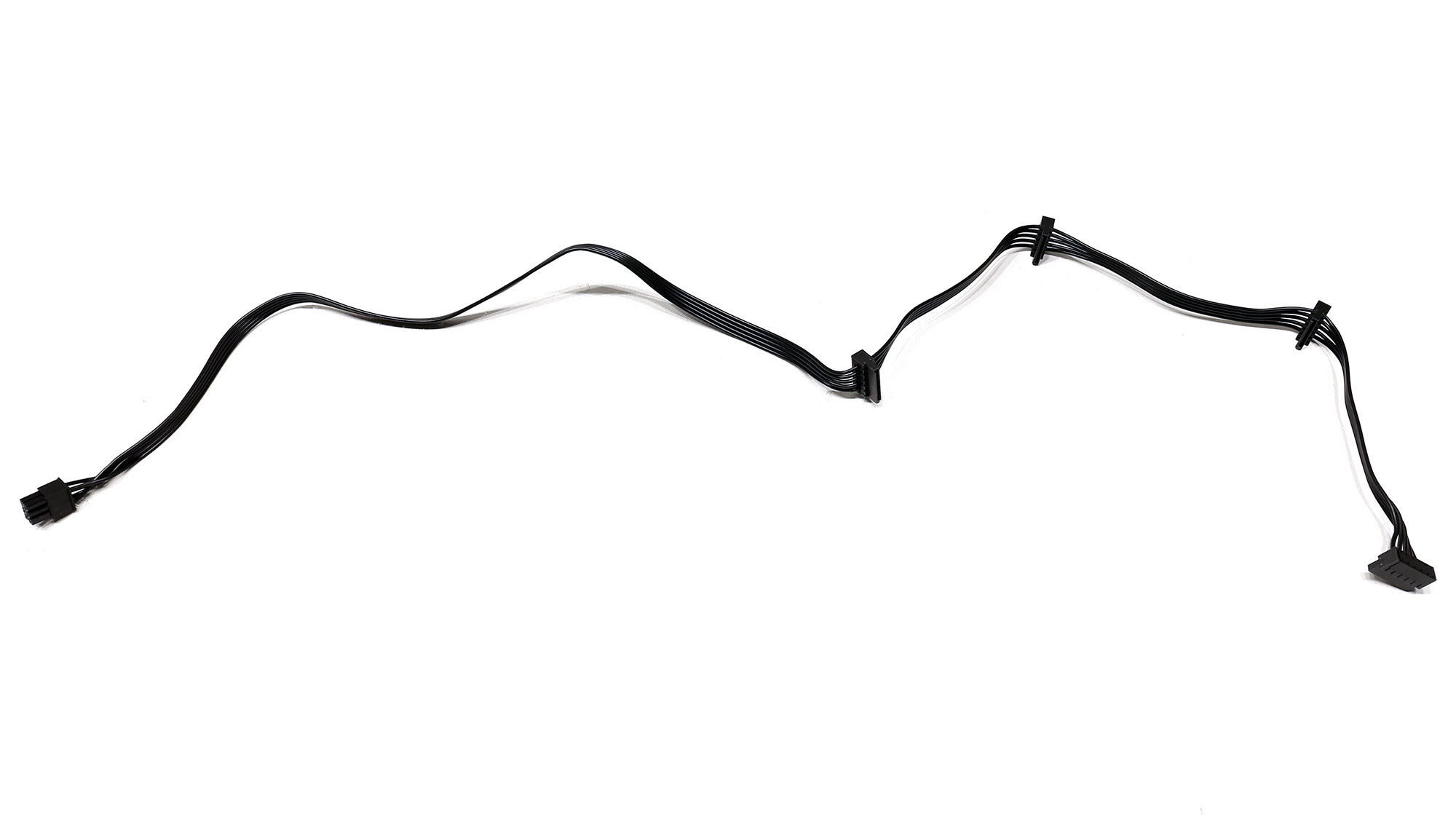


Component Analysis
We strongly encourage you to have a look at our PSUs 101 article, which provides valuable information about PSUs and their operation, allowing you to better understand the components we're about to discuss.
| General Data | - |
| Manufacturer (OEM) | CWT |
| Platform | CSZ |
| PCB Type | Double Sided |
| Primary Side | - |
| Transient Filter | 4x Y caps, 2x X caps, 2x CM chokes, 1x MOV |
| Inrush Protection | 1x NTC Thermistor SCK-207R0 (7 Ohm) & Relay |
| Bridge Rectifier(s) | 2x Vishay LVB2560 (600V, 25A @ 105°C) |
| APFC MOSFETs | 3x Infineon IPA60R099P6 (600V, 24A @ 100°C, Rds(on): 0.099Ohm) |
| APFC Boost Diode | 1x On Semiconductor FFSP1665A (650V, 16A @ 135°C) |
| Bulk Cap(s) |
1x Rubycon (420V, 680uF, 2,000h @ 105°C, MXE) & 1x Nippon Chemi-Con (420V, 470uF, 2,000h @ 105°C, KMZ) |
| Main Switchers | 2x Infineon IPA60R099P6 (600V, 24A @ 100°C, Rds(on): 0.099Ohm) |
| APFC Controller | Champion CM6500UNX & CM03X |
| Resonant Controller | Champion CU6901VAC |
| Topology |
Primary side: APFC, Half-Bridge & LLC converter Secondary side: Synchronous Rectification & DC-DC converters |
| Secondary Side | - |
| +12V MOSFETs | 8x Infineon BSC010N04LS (40V, 178A @ 100°C, Rds(on): 1mOhm) |
| 5V & 3.3V | DC-DC Converters: 2x UBIQ QN3107M6N (30V, 70A @ 100°C, Rds(on): 2.6mOhm) & 2x UBIQ QM3054M6 (30V, 61A @ 100°C, Rds(on): 4.8mOhm) PWM Controller(s): uPI-Semi uP3861P |
| Filtering Capacitors |
Electrolytic: 3x Nippon Chemi-Con (105°C, W), 1x Nichicon (2-5,000h @ 105°C, HD), 2x Nichicon (4-10,000h @ 105°C, HE), 1x Rubycon (6-10,000h @ 105°C, ZLH), 1x Nippon Chemi-Con (4-10,000h @ 105°C, KY), 1x Nippon Chemi-Con (4-10,000h @ 105°C, KYA) |
| Supervisor IC | Weltrend WT7502R |
| Fan Controller | Microchip PIC16F1503 |
| Fan Model | Hong Hua HA13525H12SF-Z (135mm, 12V, 0.5A, Fluid Dynamic Bearing Fan) |
| 5VSB Circuit | - |
| Rectifier | 1x D10S45L SBR (45V, 10A) |
| Standby PWM Controller | On-Bright OB2365T |




The GF3 1,200W uses CWT's CSZ platform. The design is modern enough, with analog controllers handling all circuits to keep costs low. CWT used high quality, including Vishay bridge rectifiers, Infineon FETs and Japanese caps. The cooling fan is also of good quality. Lastly, in such a strong PSU, we expected to see a full-bridge design instead of the half-bridge that CWT used. The former would increase efficiency but also affect the production cost.
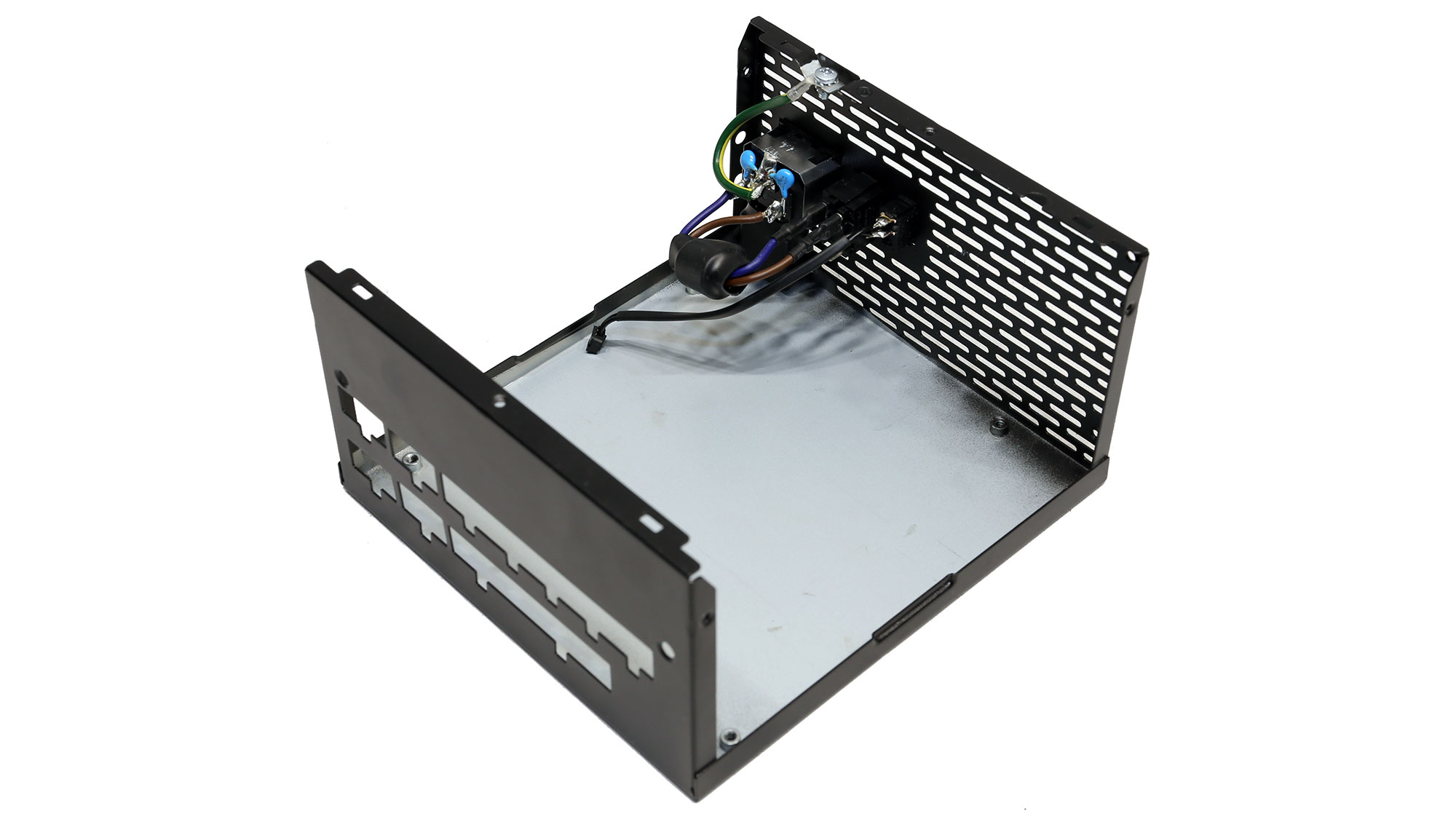
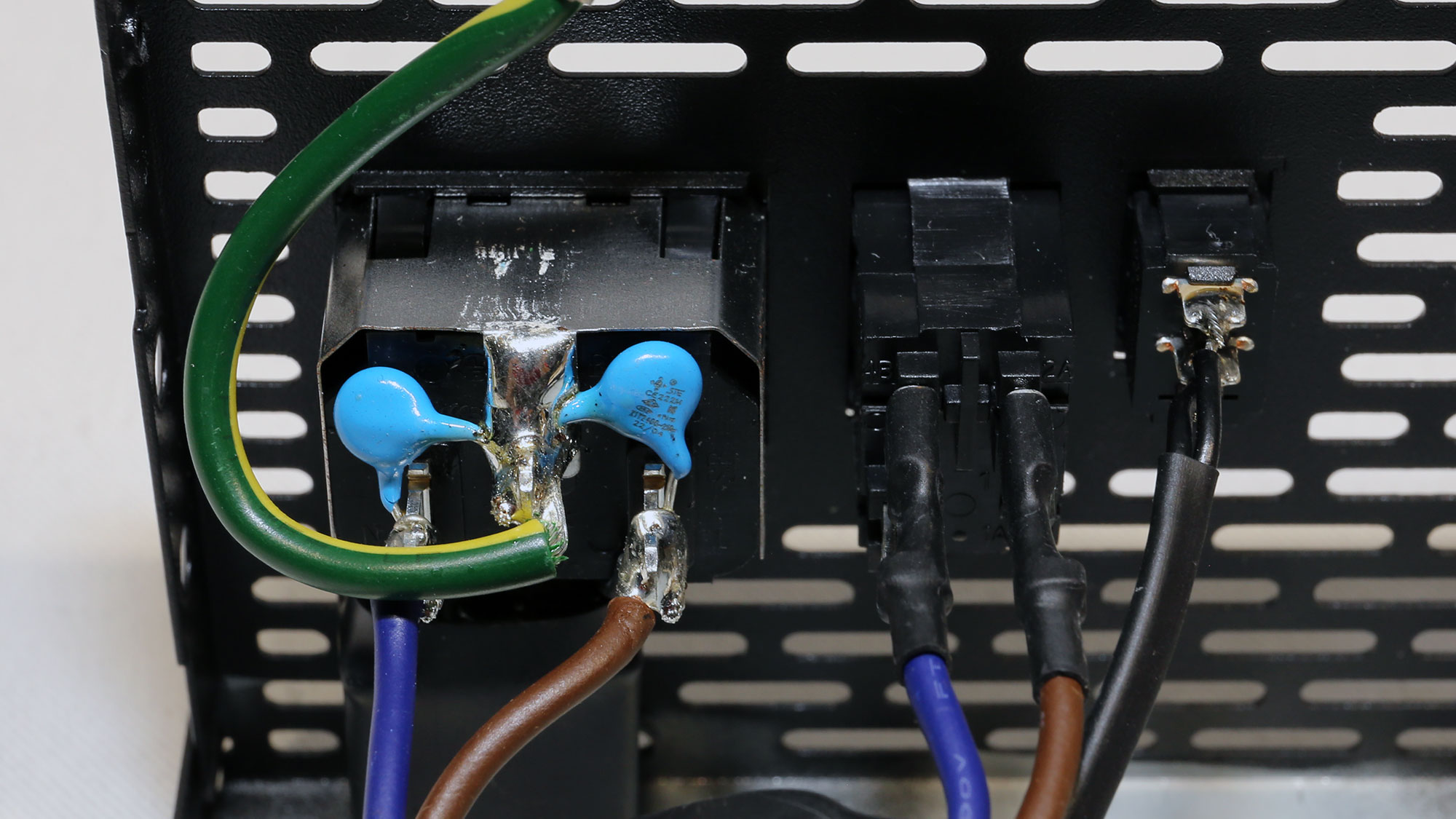


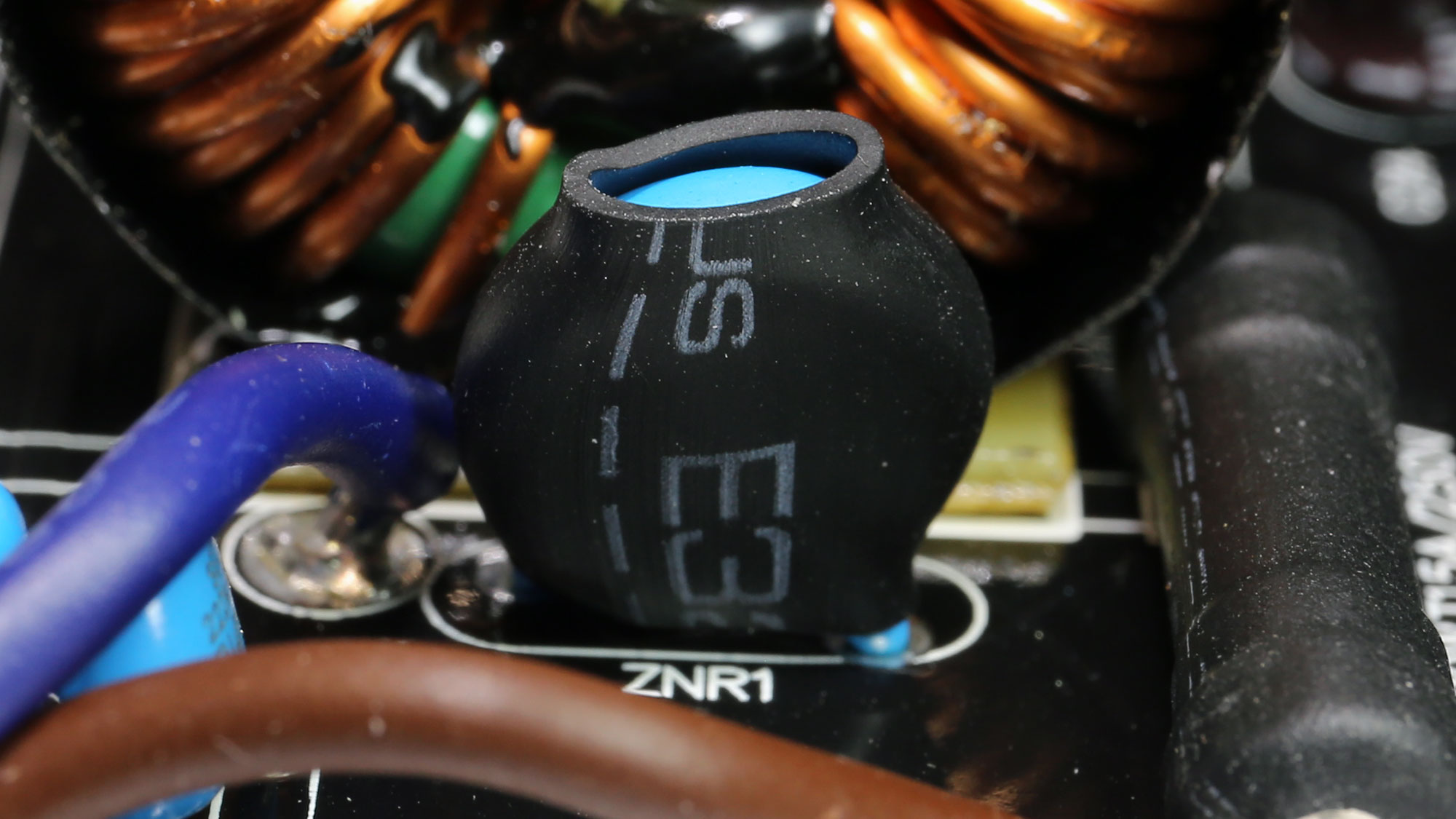

The transient/EMI filter has all necessary parts, including an MOV. There is also an NTC thermistor and bypass relay combo for suppressing high inrush currents.
Get Tom's Hardware's best news and in-depth reviews, straight to your inbox.


The pair of bridge rectifiers can handle up to 50A of current.

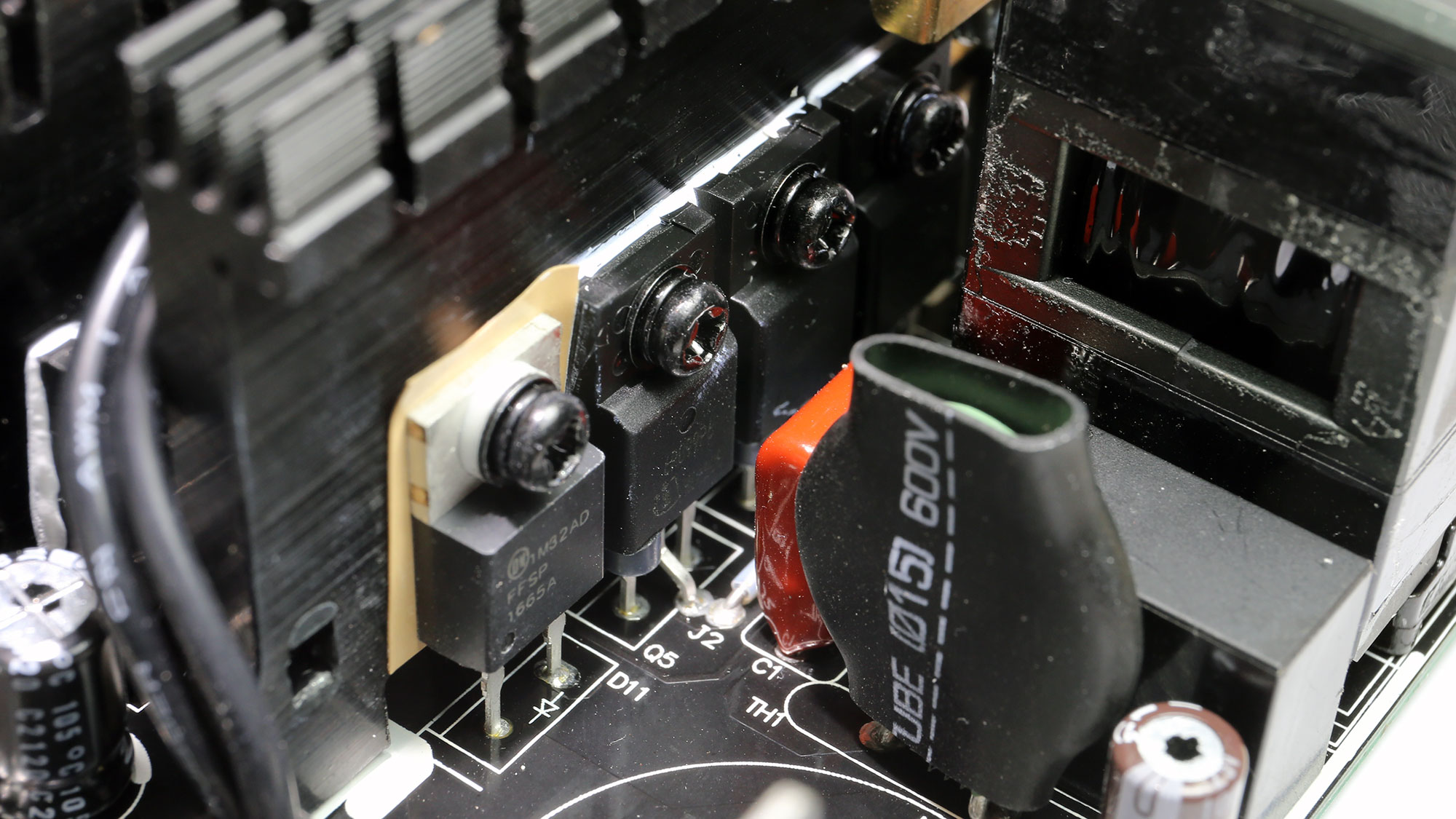



The APFC converter uses three Infineon FETs and a single boost diode. The APFC controller is a Champion CM6500UNX, supported by a CM03X IC.

The main FETs are two Infineon IPA60R099P6 installed in a half-bridge topology. An LLC resonant converter is also used, to provide an efficiency boost.



All eight Infineon FETs that regulate the 12V rail are installed on a vertical board, right next to the main transformer. This way, energy losses are minimized. The minor rails are generated through a pair of VRMs.

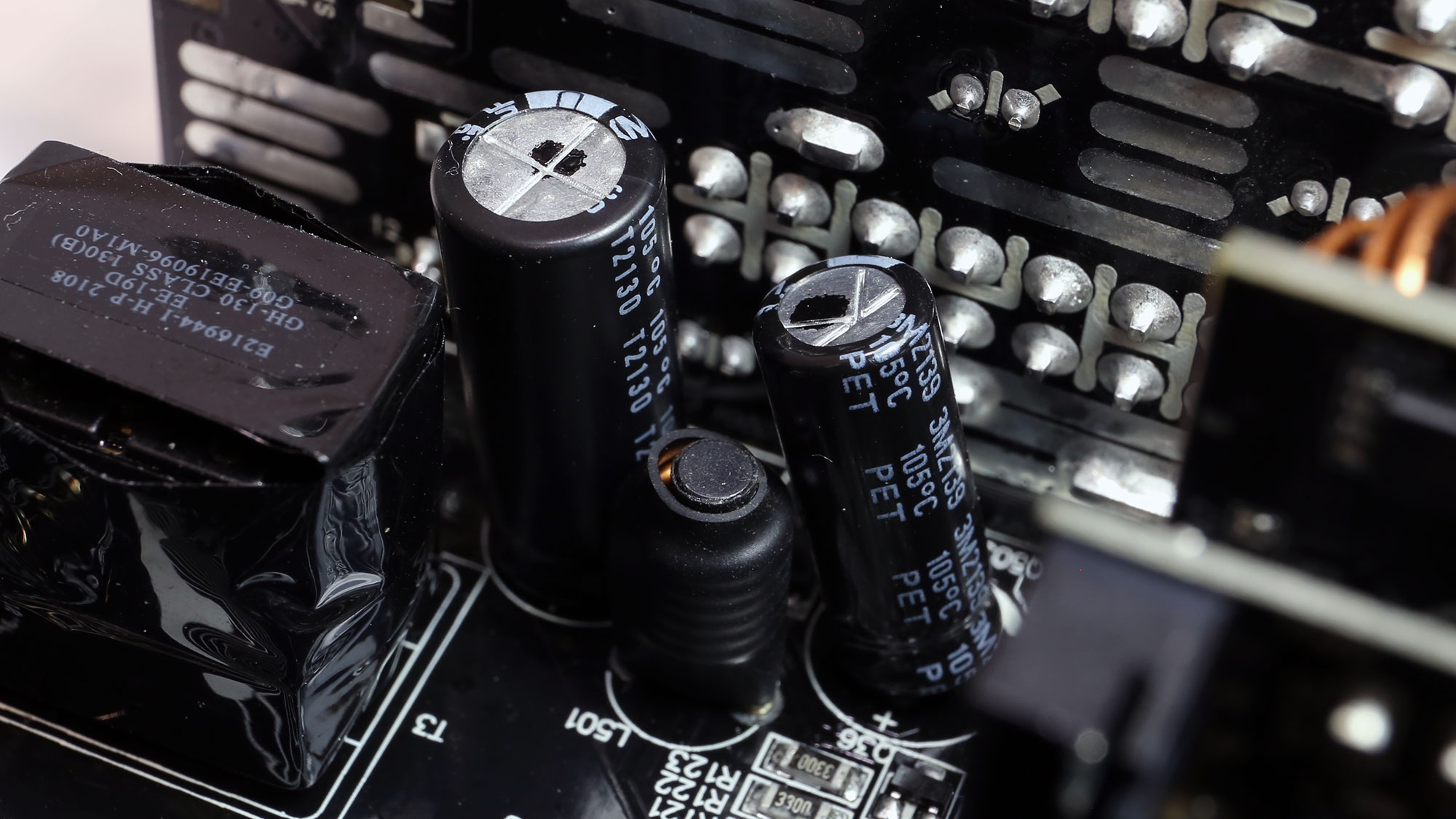

The filtering caps are by Japanese capacitors and besides electrolytic ones, we also find a large number of polymer caps.



The standby PWM controller is an On-Bright OB2365T IC.



The modular board has several polymer caps forming an additional ripple filtering layer.
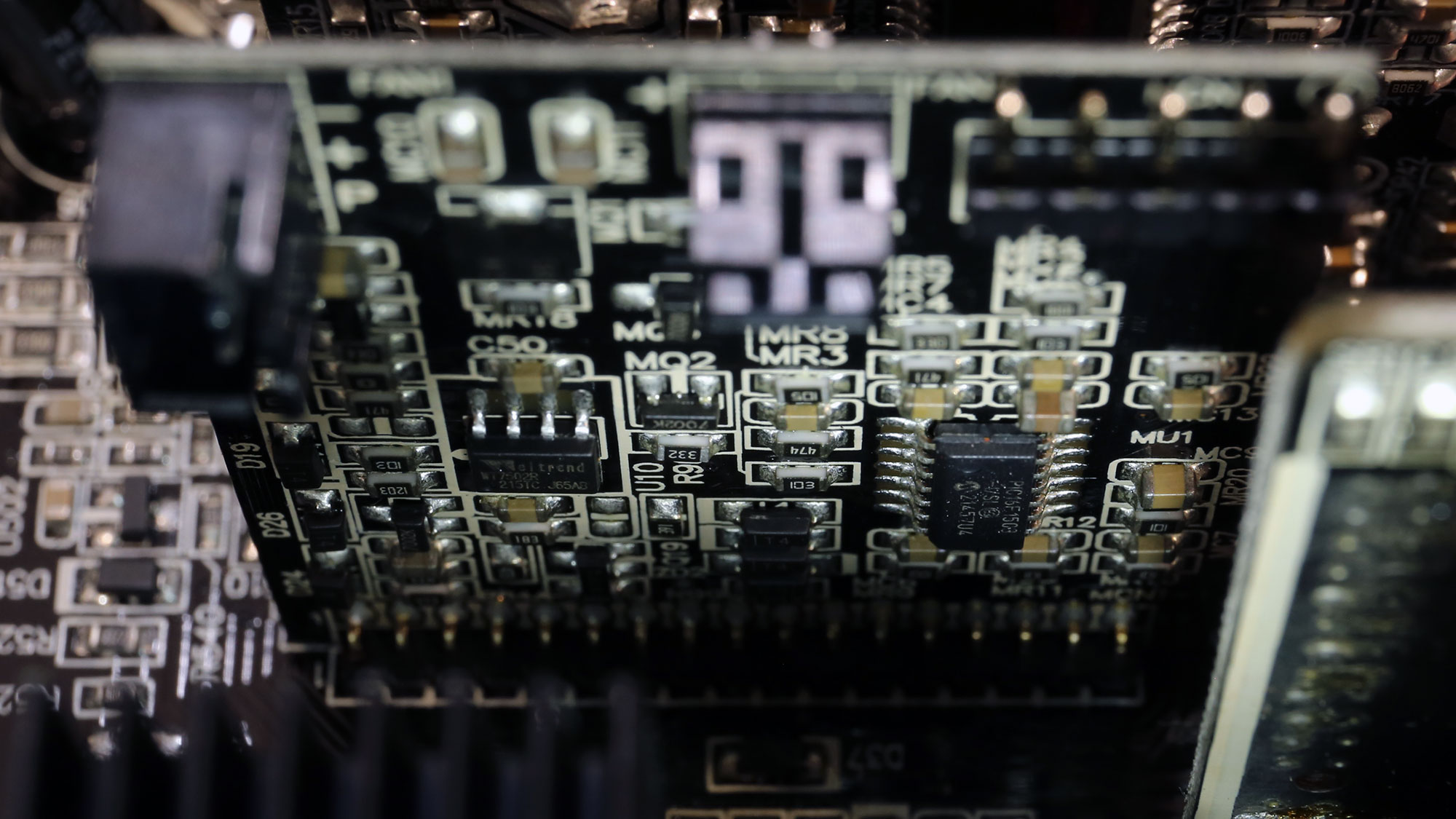
The main supervisor IC is a Weltrend WT7502R. It is installed on the same board with a Microchip PIC16F1503, which is the fan's speed controller.
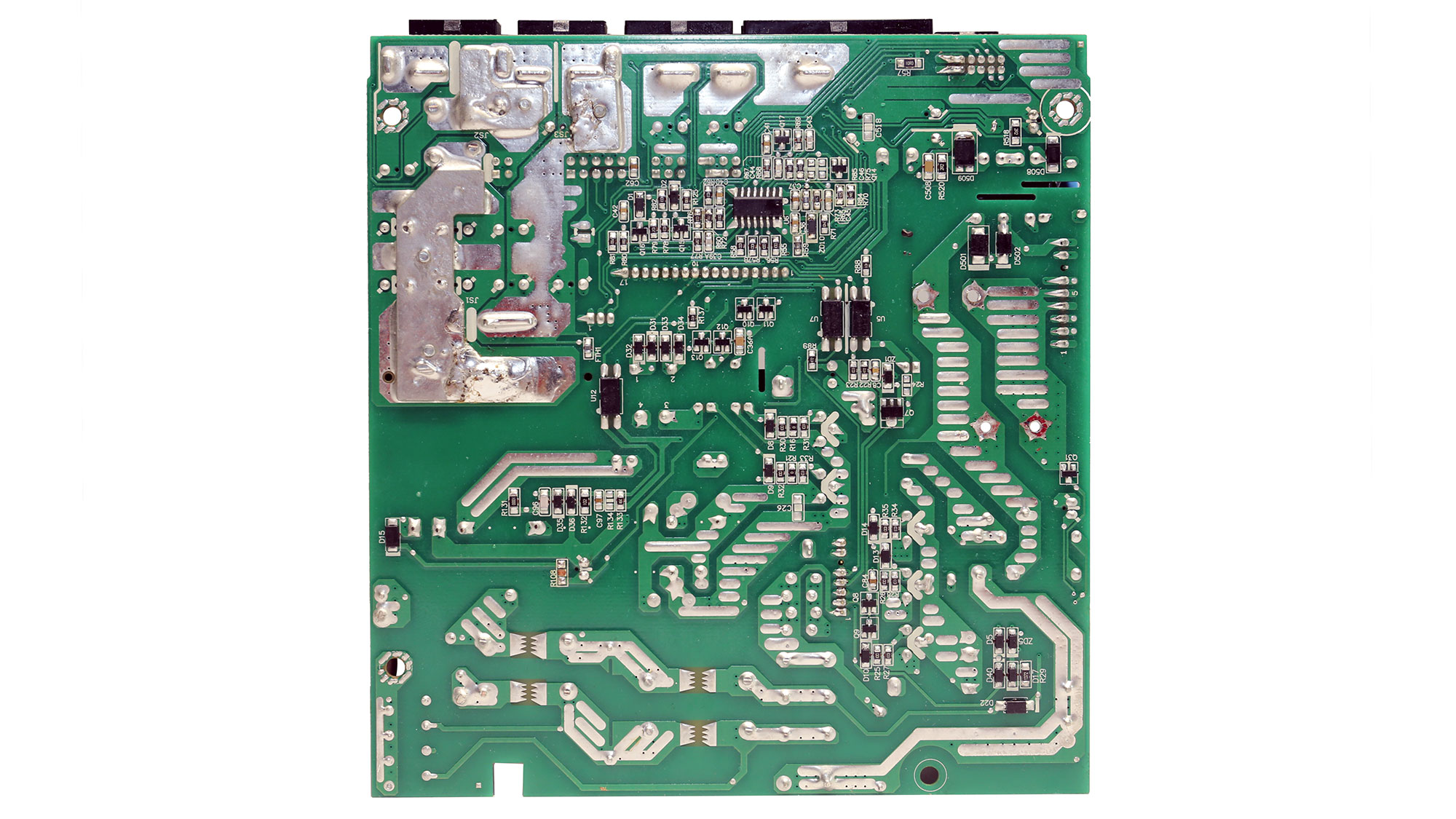


Soldering quality is good.


The cooling fan measures 135 mm in diameter and uses a fluid dynamic bearing, for lower noise output and prolonged lifetime. Hong Hua has a good name, so we expect this fan to be reliable in the long run.
MORE: Best Power Supplies
MORE: How We Test Power Supplies
MORE: All Power Supply Content
Current page: Specifications and Part Analysis
Next Page Load Regulation, Hold-Up Time, Inrush & Leakage Current, Efficiency and Noise
Aris Mpitziopoulos is a contributing editor at Tom's Hardware, covering PSUs.
-
hexxum Didn’t the Toughpower gf3 1200w fail ATX 3.0 certification through Cybenetics? Here is a quote with links from Dogzilla09 from Overclockers:Reply
Here check the results (for Thermaltake Toughpower GF3) on the second page, under Results paragraph, there's no row with ATX 3.0 Ready/PCIE 5.0 ready (previous designation) written:
https://www.cybenetics.com/d/cybenetics_TLu.pdfHere's how it should look like on the 1000W GF3 model:
https://www.cybenetics.com/d/cybenetics_1GW.pdfNow here's the MSI Ai1300P (it has different wording, but it's also passed testing).
https://www.cybenetics.com/d/cybenetics_jWP.pdf -
vashtanerada It definitely says that it passed ATX 3.0. Unless something changed since you posted this.Reply -
hexxum I contacted Cybenetics about this and the SilverStone Hela 1200r since both failed. They both failed a transient load test. Thermaltake was already sending them a new test unit, which has since passed and Cybenetics has updated their data sheet. Also contacted SilverStone. They said had sent Cybenetics a preproduction unit and that they’d be in contact with them to get it resolved. I haven’t seen any updates for the Hela 1200r yet.Reply -
Parallax1 I have startup noise problem with this. Im definetly sure its not the fan, i tried to stop it from exterior and still noise happens. I guess high inrush current causing this for 1 second, but is that harmful for psu or pc?Reply
Here is the noise :
https://youtube.com/shorts/An8ypTL-JaU?feature=share -
hexxum ReplyParallax1 said:I have startup noise problem with this. Im definetly sure its not the fan, i tried to stop it from exterior and still noise happens. I guess high inrush current causing this for 1 second, but is that harmful for psu or pc?
Here is the noise :
https://youtube.com/shorts/An8ypTL-JaU?feature=share
I had a Hela 1200r for a hot minute and it made a similar noise. I use a smart plug with my computer to fully cut off power after shut down. In a way it’s like flipping the switch on the psu to fully cut power. I noticed the psu would make this noise when I turned the computer back on. Didn’t seem to happen if I would shutdown the computer and turn it back on without fully cutting the power at the plug, which leads me to believe the noise is from some component in the psu when it first gets loaded with electricity. I ended up returning the Hela 1200r due to it failing atx 3.0 certification. I now have a msi ai1300p and I’ve never heard it make that noise. The Hela 1200r operated fine though so I don’t think this sound is something to worry about.
Also to anyone else following earlier posts of mine in this thread. The Hela 1200r sent a new production unit to Cybenetics and it has now passed atx 3.0 certification. Apparently they had sent a pre production unit first and that’s why it failed one of the transient load tests. -
Parallax1 Reply
Probably both use the same PCB, both are CWT production. I couldn't trust it and then returned it because I was going to use it as a rendering and workstation.hexxum said:I had a Hela 1200r for a hot minute and it made a similar noise. I use a smart plug with my computer to fully cut off power after shut down. In a way it’s like flipping the switch on the psu to fully cut power. I noticed the psu would make this noise when I turned the computer back on. Didn’t seem to happen if I would shutdown the computer and turn it back on without fully cutting the power at the plug, which leads me to believe the noise is from some component in the psu when it first gets loaded with electricity. I ended up returning the Hela 1200r due to it failing atx 3.0 certification. I now have a msi ai1300p and I’ve never heard it make that noise. The Hela 1200r operated fine though so I don’t think this sound is something to worry about.
Also to anyone else following earlier posts of mine in this thread. The Hela 1200r sent a new production unit to Cybenetics and it has now passed atx 3.0 certification. Apparently they had sent a pre production unit first and that’s why it failed one of the transient load tests.
Probably youre right. Mine has cutoff mechanism inside, i can barely hear that something cutting off the power, but you cant control it.
I have ordered FSP Hydro PTM Pro 1200w atx 3.0 now, I know that FSP keeps the product controls tight, I hope I will be satisfied.